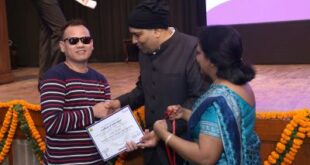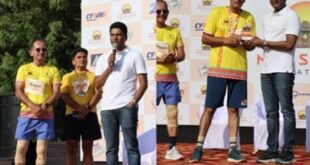New Delhi, October 31, 2023: Languages around the world have words for ‘this’ and ‘that’ according to new research from an international team, led by the University of East Anglia.
Researchers studied more than 1,000 speakers of 29 different languages to see how they use demonstratives – words that show where something is in relation to a person talking such as ‘this cat’ or ‘that dog’.
It was previously thought that languages vary in the spatial distinctions they make – and that speakers of different languages may think in fundamentally different ways as a consequence.
But the new study shows that all of the languages tested make the same spatial distinctions using words like ‘this’ or ‘that’ based on whether they can reach the object they are talking about.
Lead researcher Prof Kenny Coventry, from UEA’s School of Psychology, said; “There are over 7,000 diverse languages spoken across the world.
“We wanted to find out how speakers of a wide range of languages use the oldest recorded words in all of language – spatial demonstratives, such as ‘this’ or ‘that’.”
The 45-strong international team studied 29 languages from around the world including English, Spanish, Norwegian, Japanese, Mandarin, Tzeltal and Telugu.
They tested over 1,000 speakers to see how they use demonstratives in their language to describe where objects are across a range of different spatial configurations.
Statistical analysis revealed the same mapping between reachable and non-reachable objects and demonstratives across all languages.
Prof Coventry said: “We found that in all the languages we tested, there is a word for objects that are within reach of the speaker, like ‘this’ in English, and a word for objects out of reach – ‘that’.
“This distinction may explain the early evolutionary origin of demonstratives as linguistic forms,” he added.
This research was led by the University of East Anglia in collaboration with researchers at 32 other international institutions including Friedrich-Schiller-Universität Jena, Germany, the Norwegian University of Science and Technology, Aarhus University, Denmark, and the University of Buffalo, USA.
It was funded by by EU H2020 ITN Marie Skłodowska-Curie Action grant agreement no. 676063 (DCOMM) awarded to Kenny R. Coventry and colleagues.
‘Spatial Communication Systems Across Languages Reflect Universal Action Constraints’ is published in the journal Nature Human Behaviour.
 Newspatrolling.com News cum Content Syndication Portal Online
Newspatrolling.com News cum Content Syndication Portal Online







